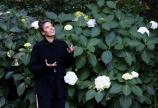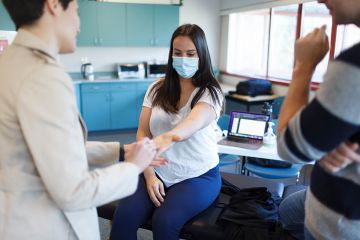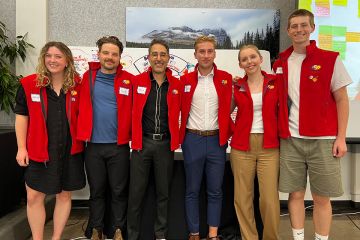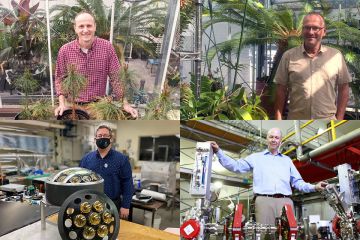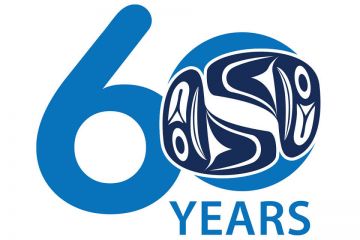Broadening community engagement in art
- John Threlfall
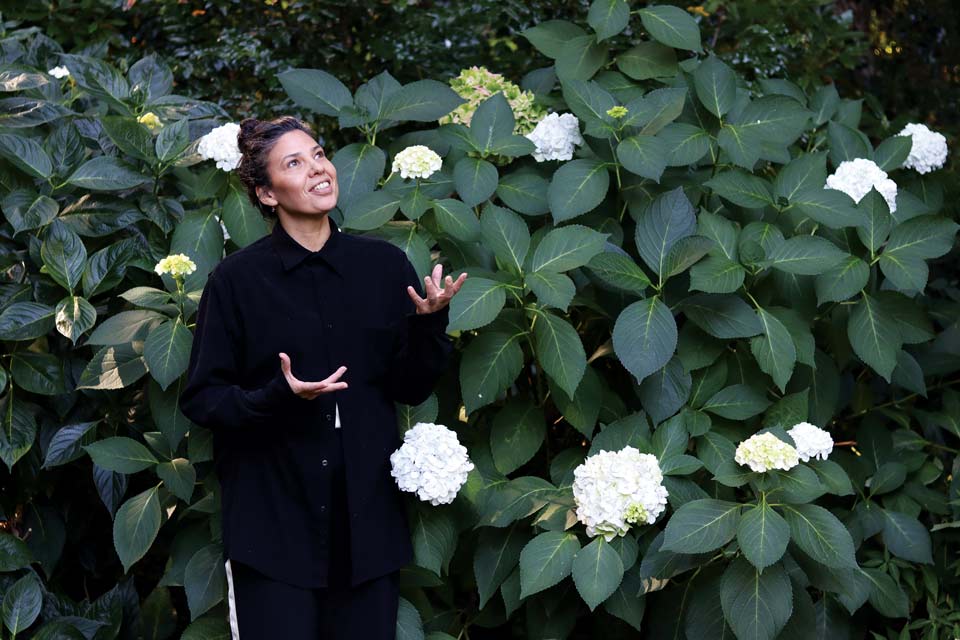
An early morning walk through the visual arts department usually sees a mix of students, faculty and staff arriving with coffee in hand; something not typically seen is an informal smudging ceremony outside the front door. But that’s just one of the ways Lindsday Katsitsakatste Delaronde is looking to make a difference as the latest Audain Professor in Contemporary Art Practice of the Pacific Northwest.
“I’ve never abandoned who I am as a Mohawk person,” says Delaronde. “I really try to work under the value systems of my own knowledge. This position is a marker of the hard work I’ve been doing for the past 20 years: it grounds my artistic practice in relationship to my scholarship in one central place and has a creative grounding that really aligns with who I am.”
It also clearly aligns with the mandate of Vancouver’s Audain Foundation, which originally established the position in 2010 with a $2-million gift from philanthropist and UVic alumnus Michael Audain. In February 2023, they further committed $160,000 in new funding to the professorship—including a three-year, $60,000 project specifically designed to support the Audain Professor’s efforts around outreach, community engagement and related research activities. The foundation also funds the annual $7,500 Audain Travel Award for visual arts students, presented to graduate student Kosar Movahedi in fall 2022.
Staying authentic
A Kanienke’haka woman born and raised on the Kahnawake reservation outside of Montreal, Delaronde is no stranger to transforming public spaces: as the City of Victoria’s inaugural Indigenous Artist in Residence (2017-19), her collaborative land-based/site-specific performance art dramatically engaged viewers from the lawn of the BC Legislature to almost every cultural institution in the city.
Yet despite having multiple degrees—including two from UVic (MFA in Visual Arts, MA in Indigenous Communities Counselling Psychology)—and years of professional practice, Delaronde has never lost sight of her own learning journey: in addition to her current three-year term as Audain Professor, she is also pursuing a PhD in applied theatre practice with the Department of Theatre. This, she feels, gives her unique insight into the educational process.
“I love teaching and learning, both inside and outside the classroom,” she says. “I’m just trying to stay authentic to who I am as a person, as an artist, and bring that into the institution. But I can also look back and see the ways I struggled as an Indigenous student, regardless of which department. There’s a lot of folding of time and history that really helps me navigate this position.”
Broadening the scope
Over the past decade, the Audain Professorship has been held by such distinguished practicing artists as Governor General’s Award-winner Rebecca Belmore, Witness Blanket creator Carey Newman and the internationally acclaimed Michael Nicoll Yahgulanaas, among others. Delaronde is now the seventh Indigenous artist to hold the position.
These are all foundational artists within the Canadian landscape of Indigenous contemporary art. Each has a big history to draw on in terms of tools and techniques and facilitation, and each brings something of themselves into the space. That’s what’s beautiful about the position: it doesn’t have a narrow scope. The Audain Professorship creates a platform for Indigenous artists to be themselves within our institution.”
—Audain Professor in Contemporary Art Practice of the Pacific Northwest Lindsday Katsitsakatste Delaronde
Yet Delaronde’s personal and professional experiences have also fuelled a desire for change which parallels similar societal demands.
“Making change on an institutional level is always a top-down approach, but my philosophy is around grassroots mobilization of new ideas that really surface from the community—and, in this case, my students are the community,” she explains.
“We’re working with a generation of students who are more aware than we were 15 or 20 years ago. They’re looking for anti-oppressive and anti-racist models, an increased sensitivity around cultural appropriation and a safe atmosphere of inclusivity and diversity that retains and encourages the rigour of learning how to talk about culture in good, productive, generative ways. Sometimes we forget we all come from different cultural lenses, and I’d like to see that grow in the department.”
Being the change
Delaronde’s long connection with UVic also makes her unique in Audain history. “The University of Victoria has been essential not just in my educational journey but also as a place of deep reflection in my purpose,” she says. “I’ve never stopped caring about people and trying to make positive changes in our communities.”
From First Peoples House to Indigenous Studies and the Indigenous Governance program, she’s seen a lot of positive change since she first came to campus 15 years ago, yet feels now is not the time to slow down. “It’s important to value and acknowledge the good work that has happened at the institution, but there’s more work to do and there’s no stopping it now.”
Indeed, it’s hard not to see Delaronde herself as being emblematic of the very changes she’s witnessed.
“We need to see ourselves in leadership roles and I need to be there for my students and work with others towards institutional change,” she concludes. “Sometimes I feel like I just have to survive the institution daily, but at the same time I have such a passion and love for the arts. My practice has changed a lot and my teaching continues to reveal itself in terms of who I am today. It’s all very exciting and very fresh.”
Photos
In this story
Keywords: Change and transformation, arts, Indigenous, philanthropy, visual arts, theatre, activism
People: Lindsay Delaronde
Publication: The Ring

